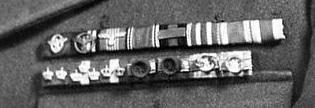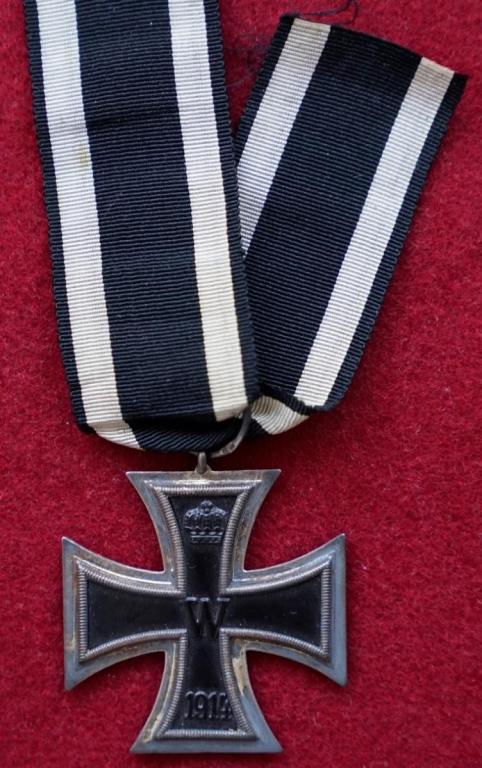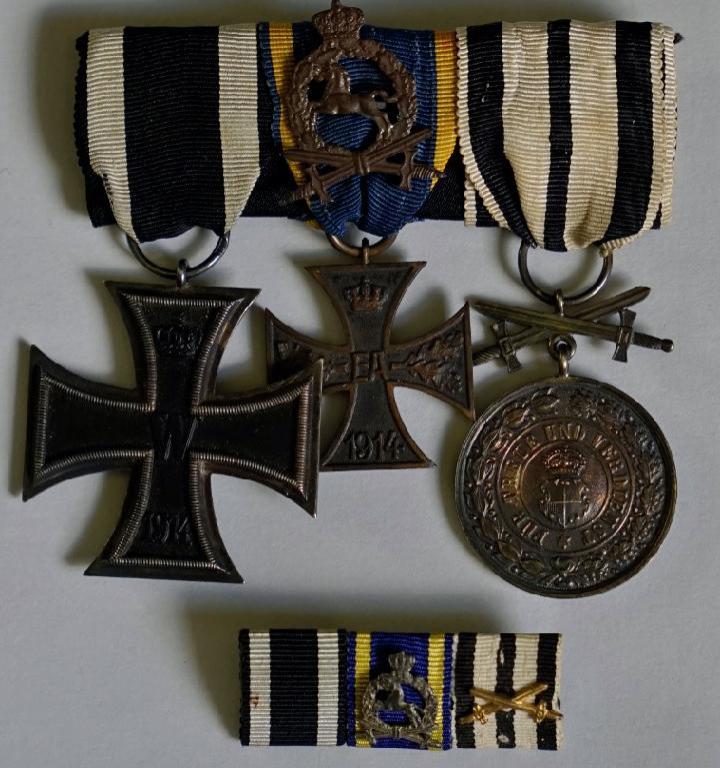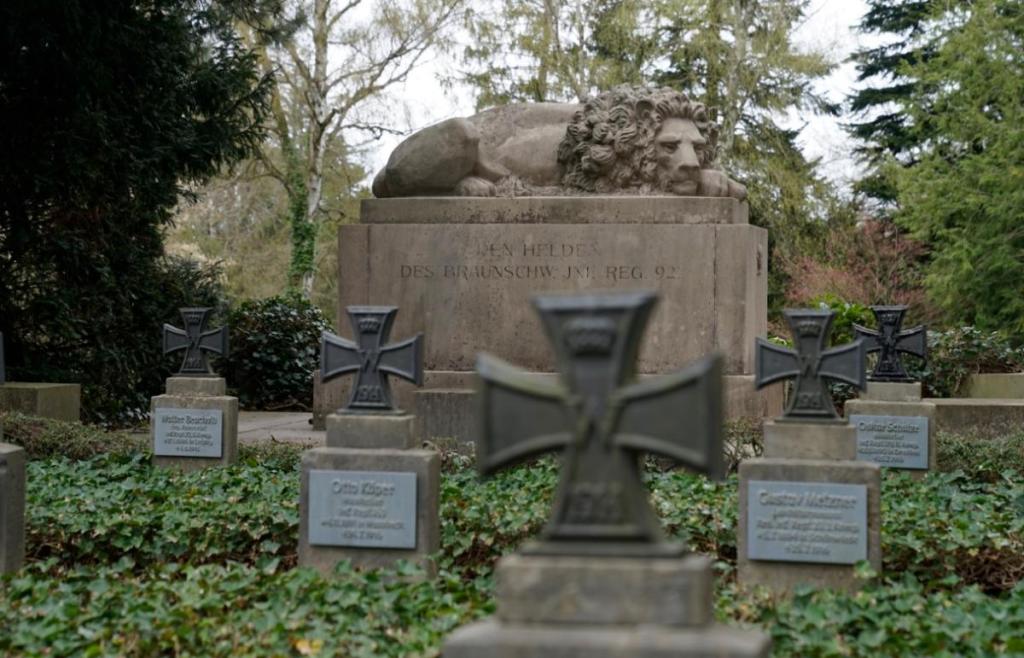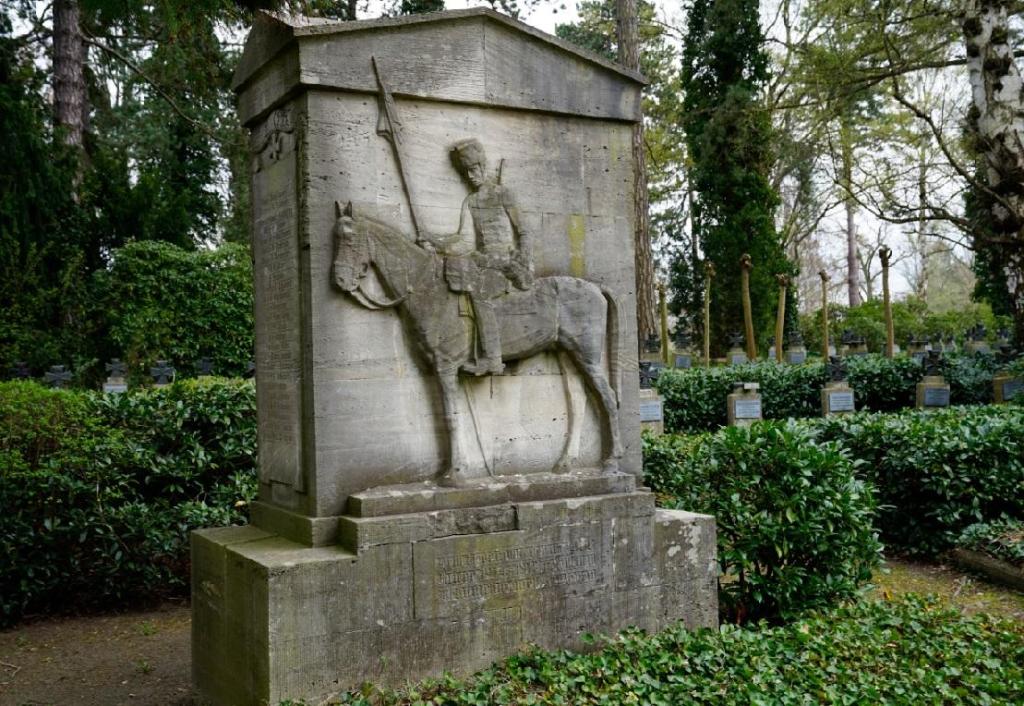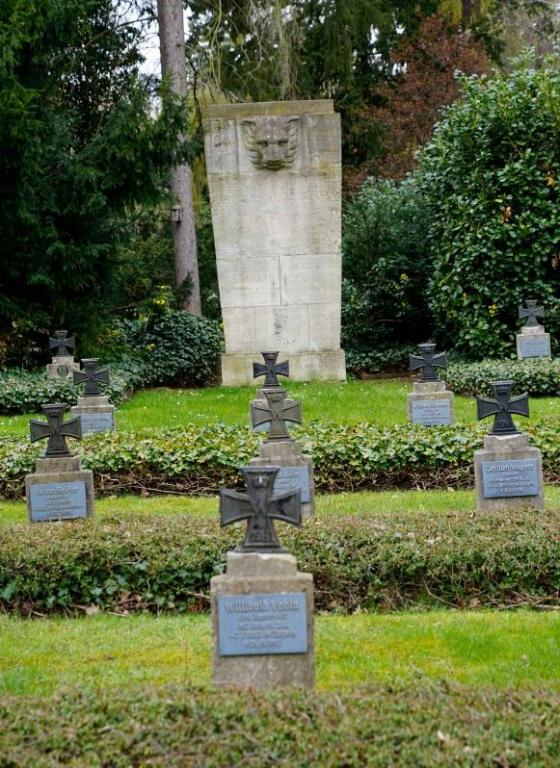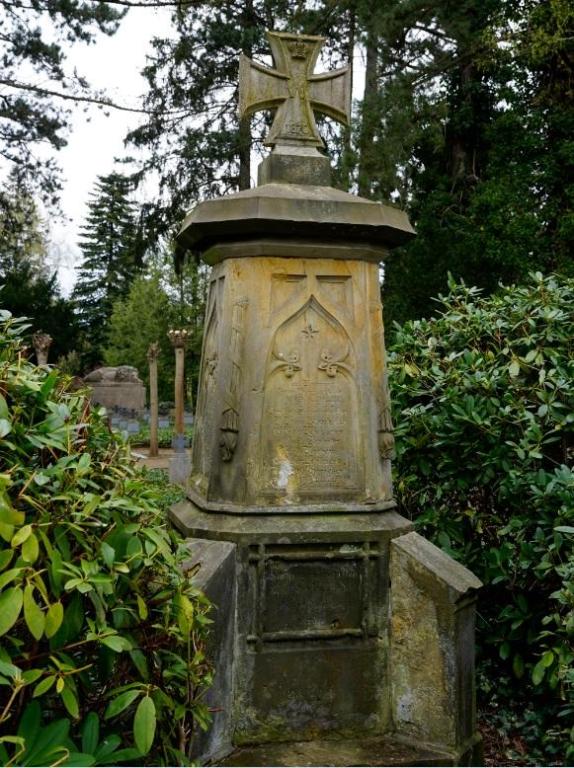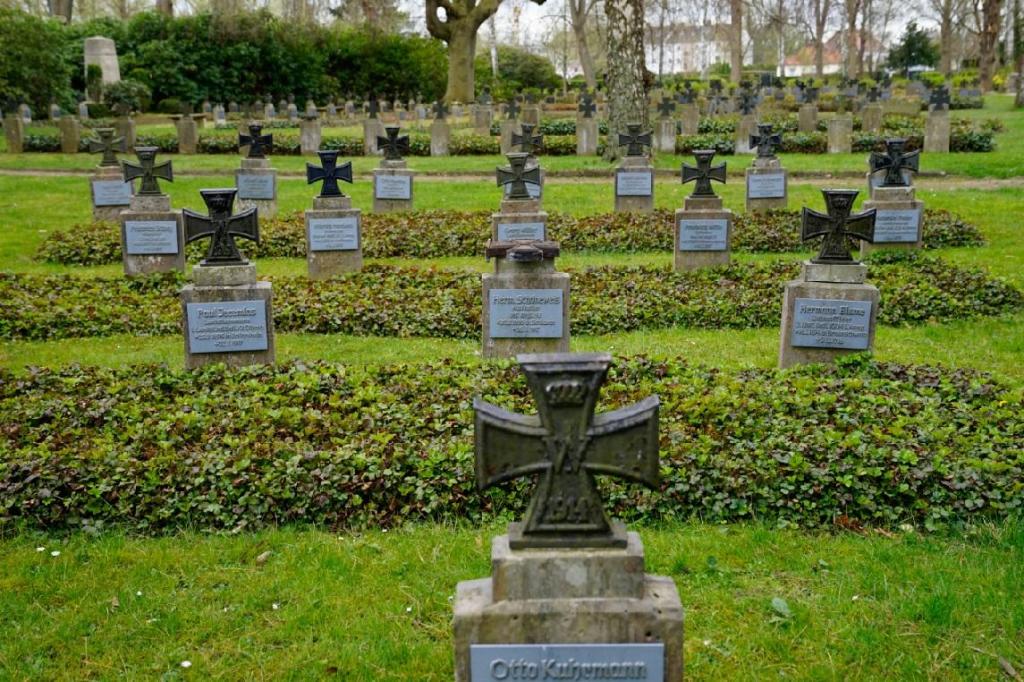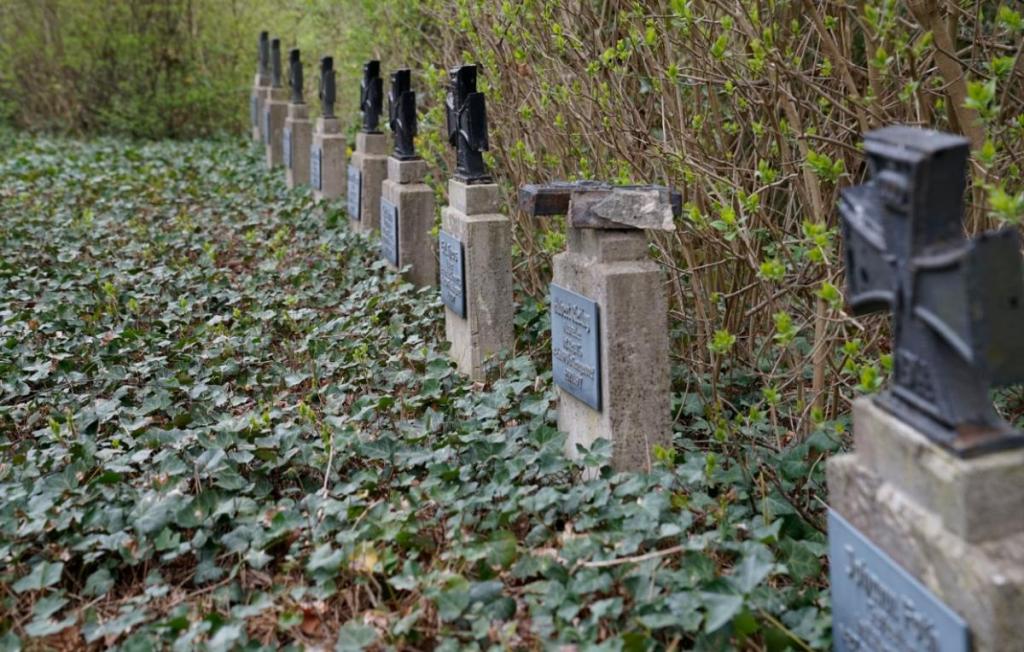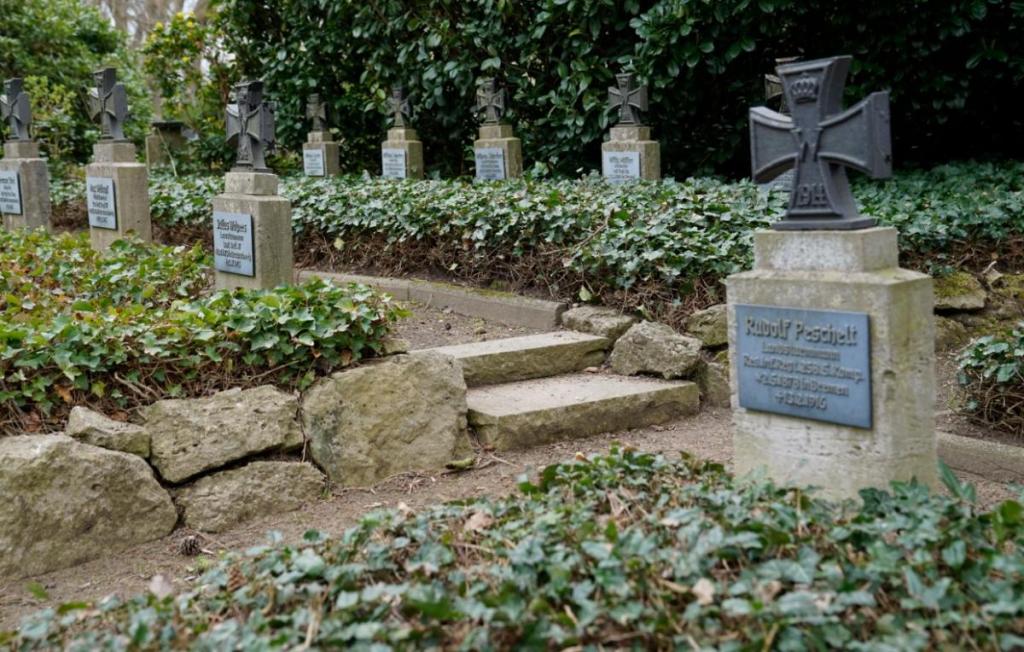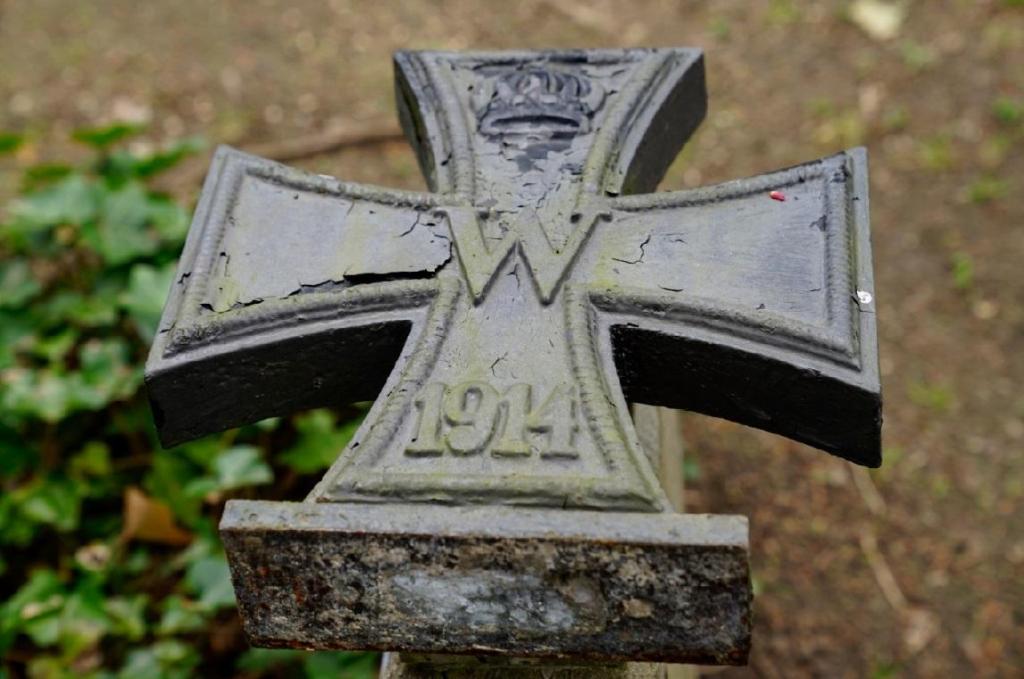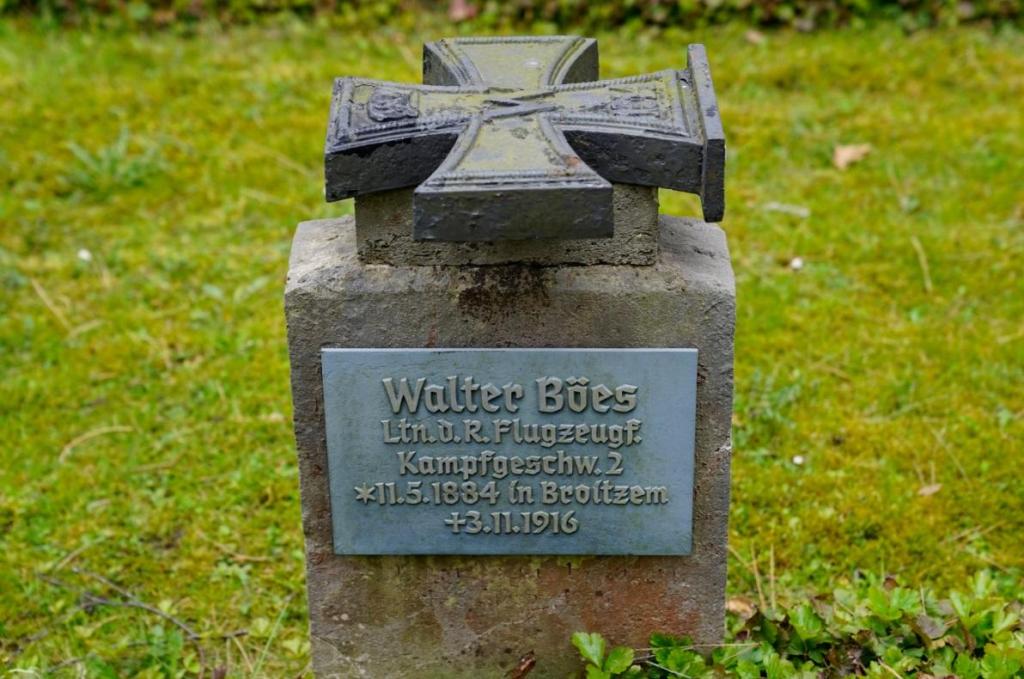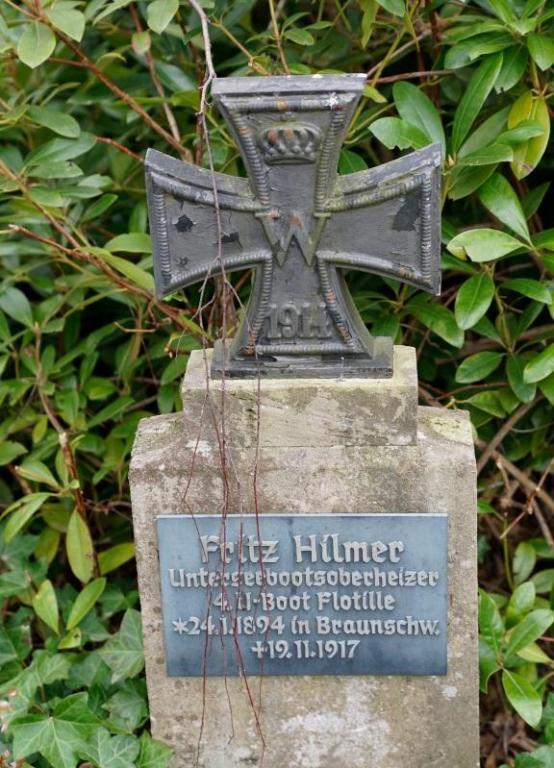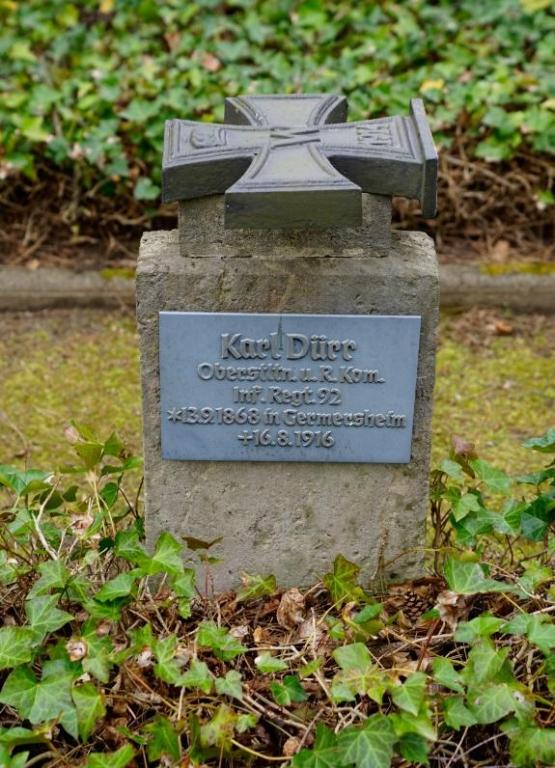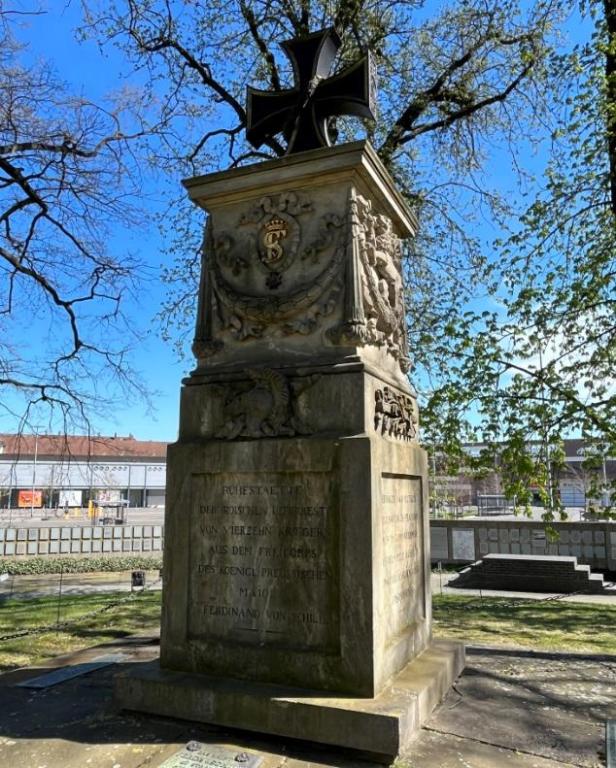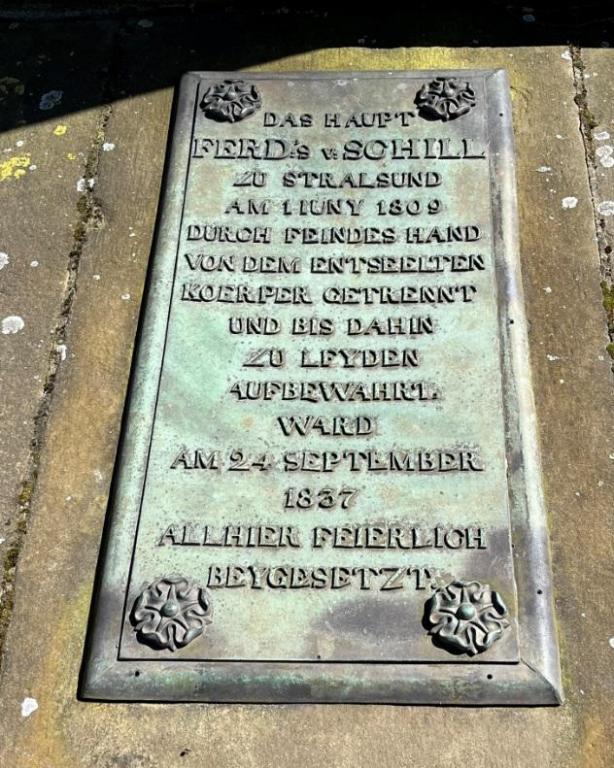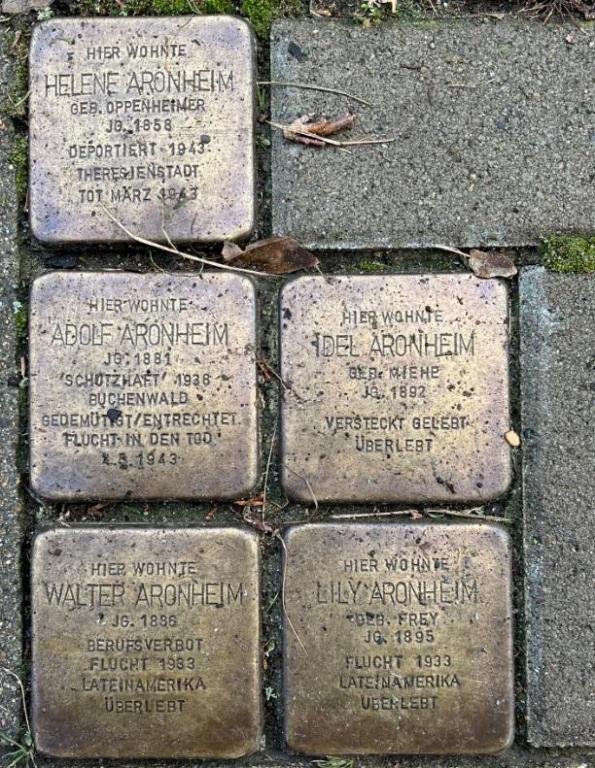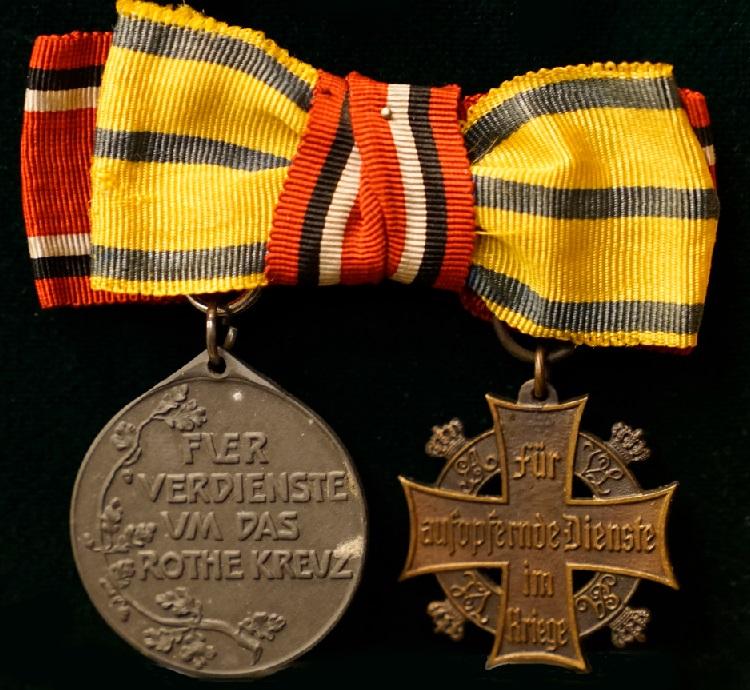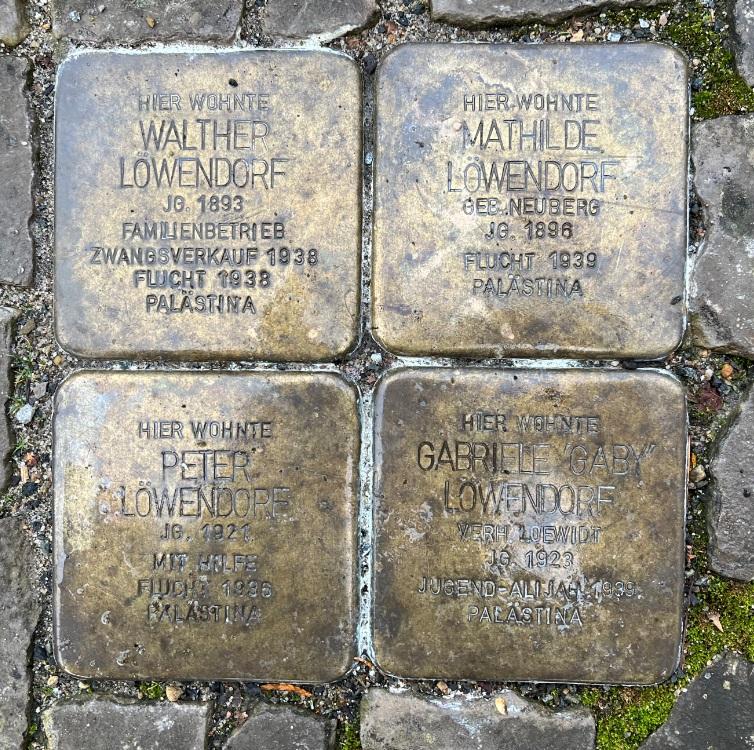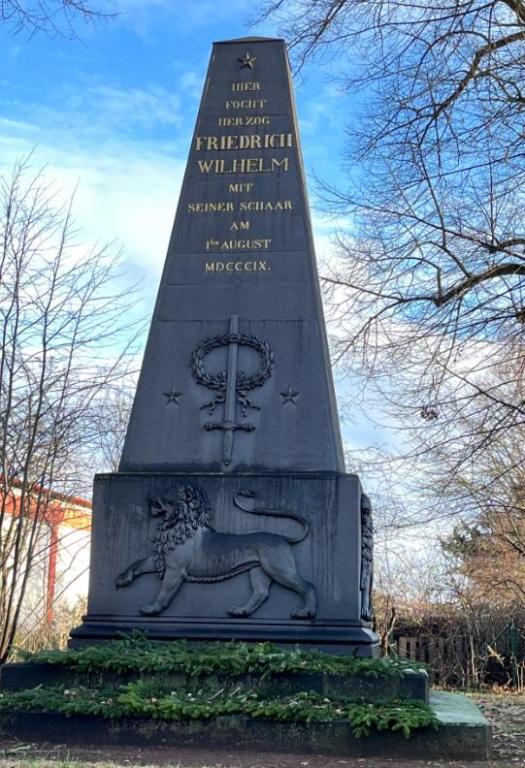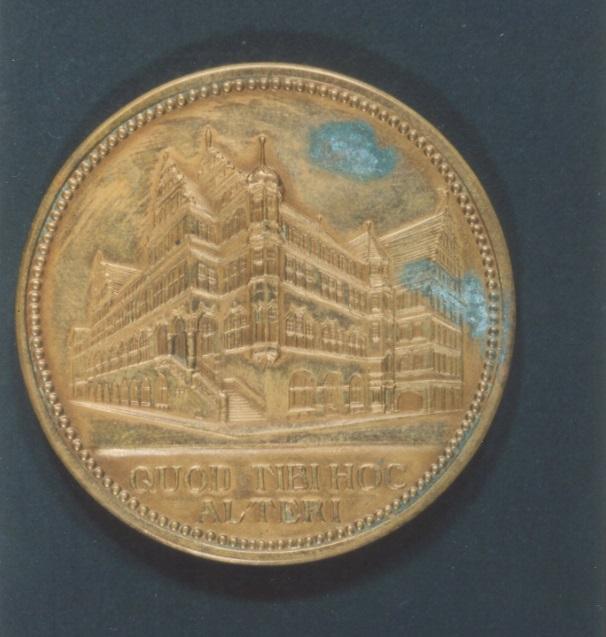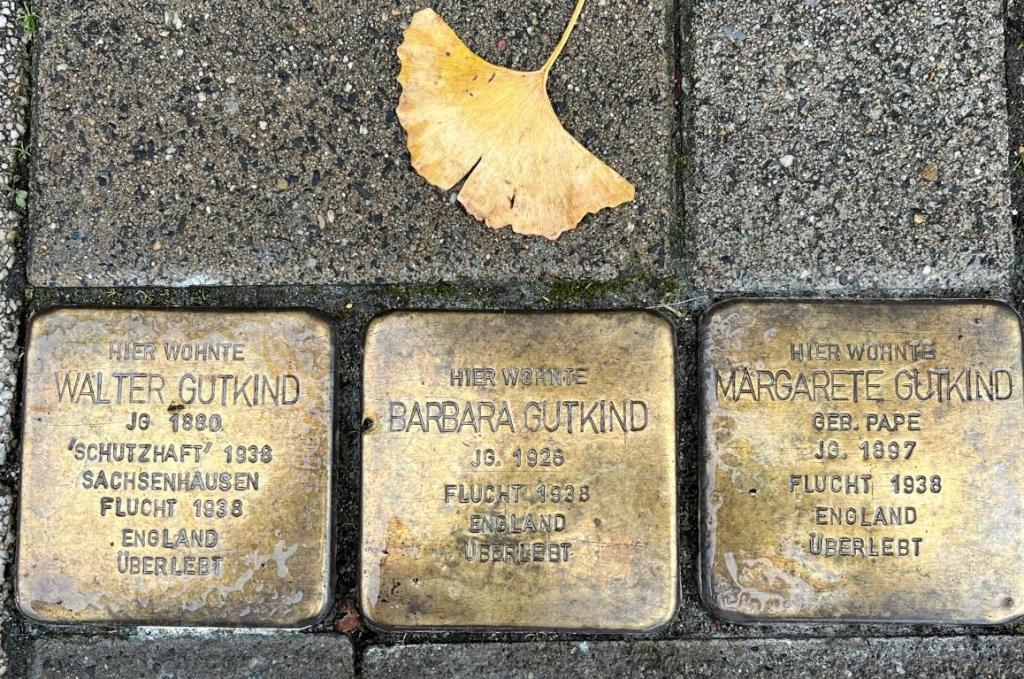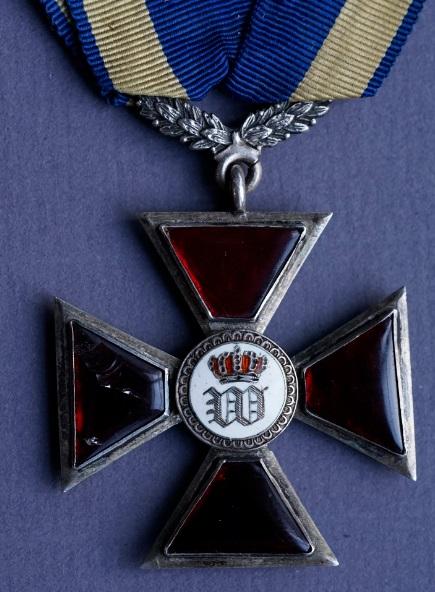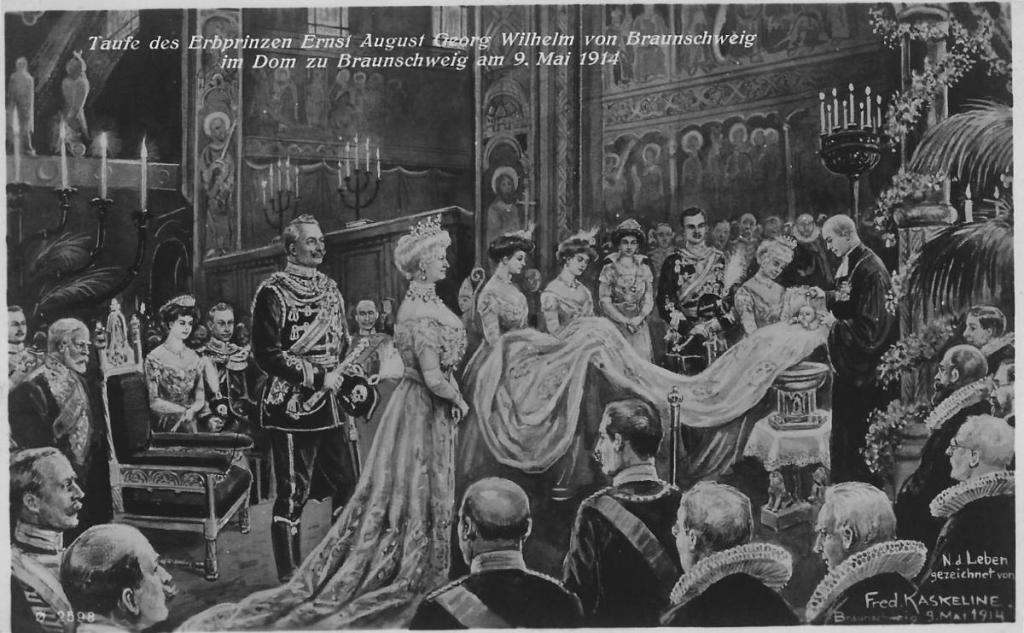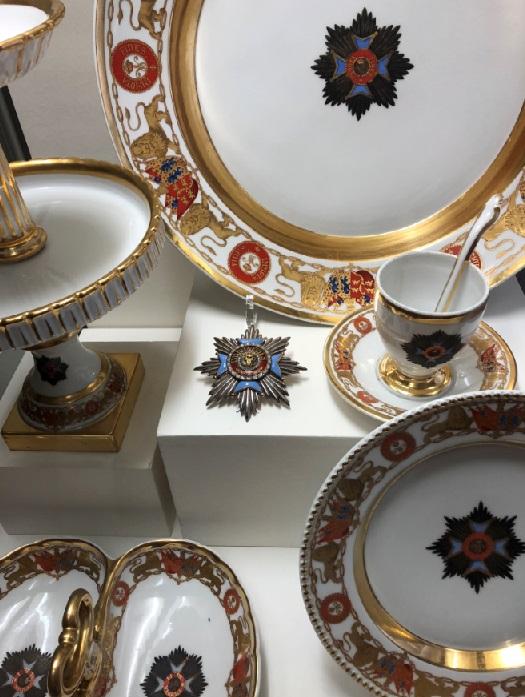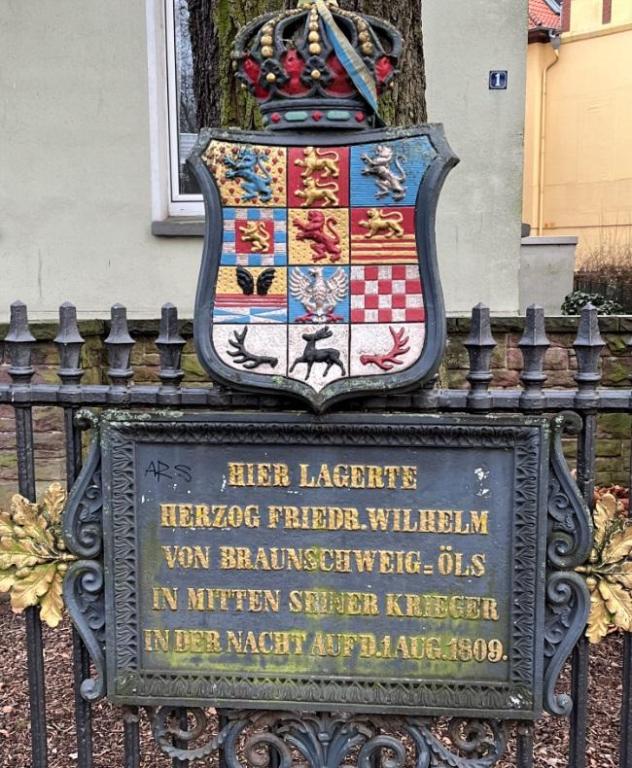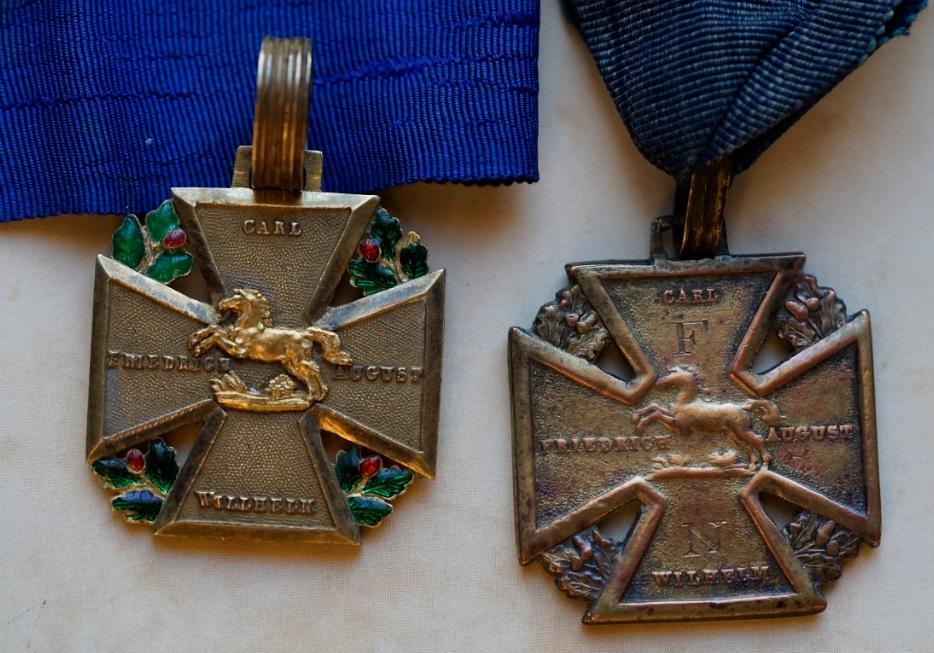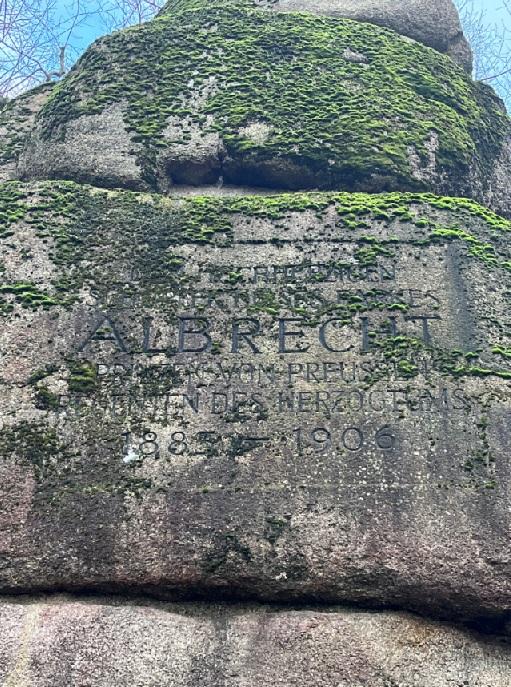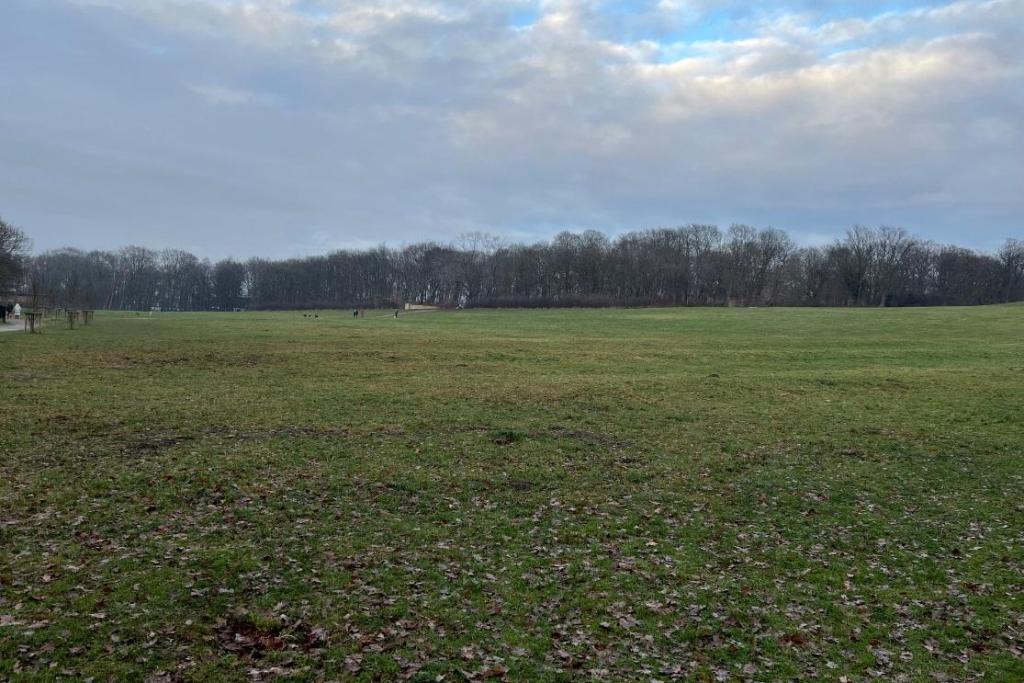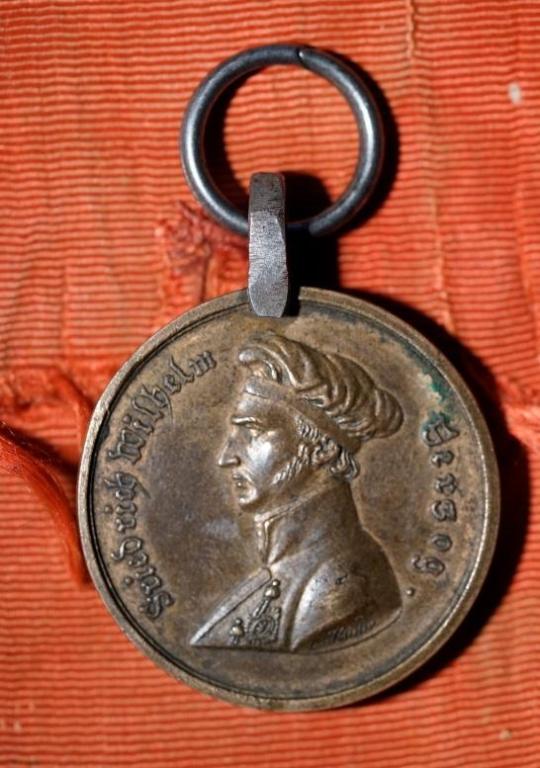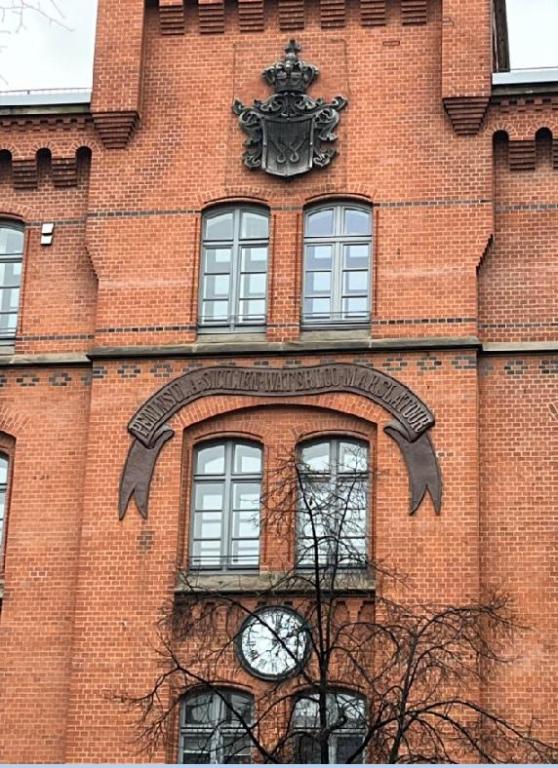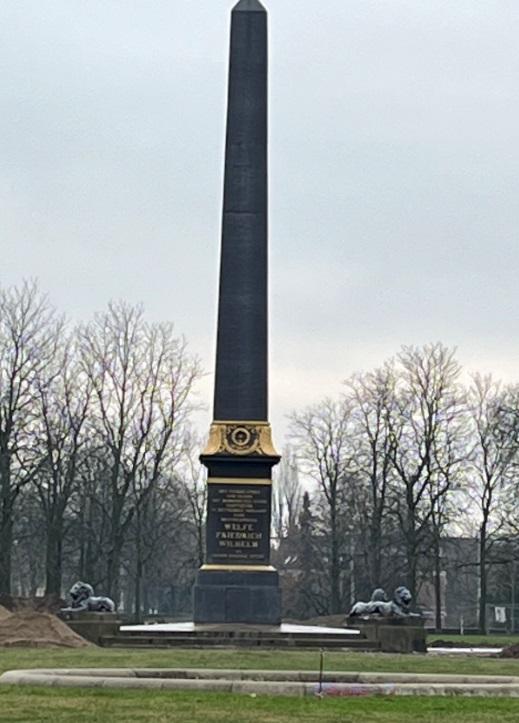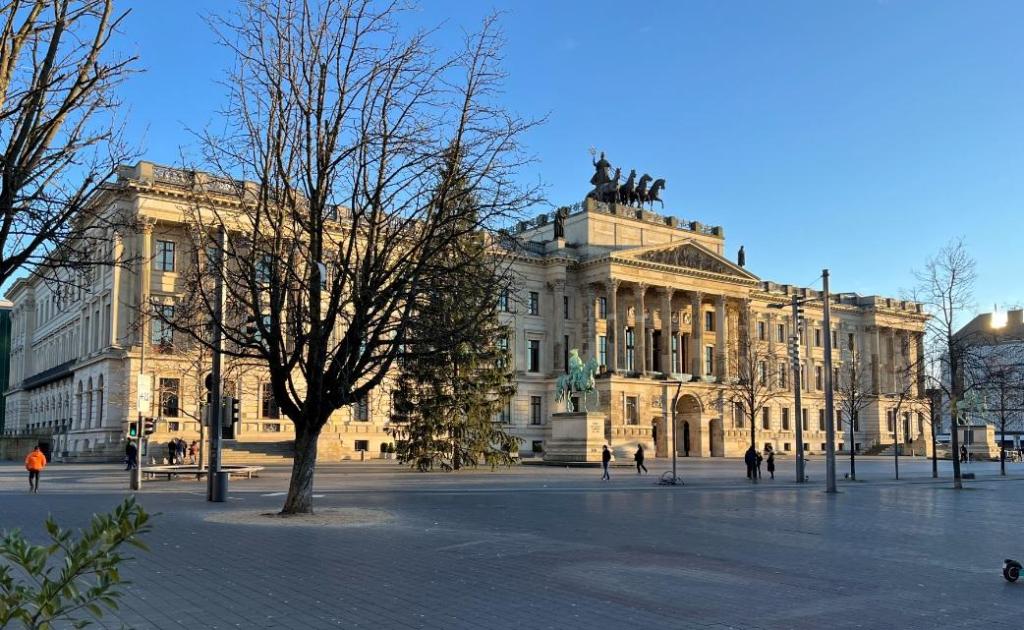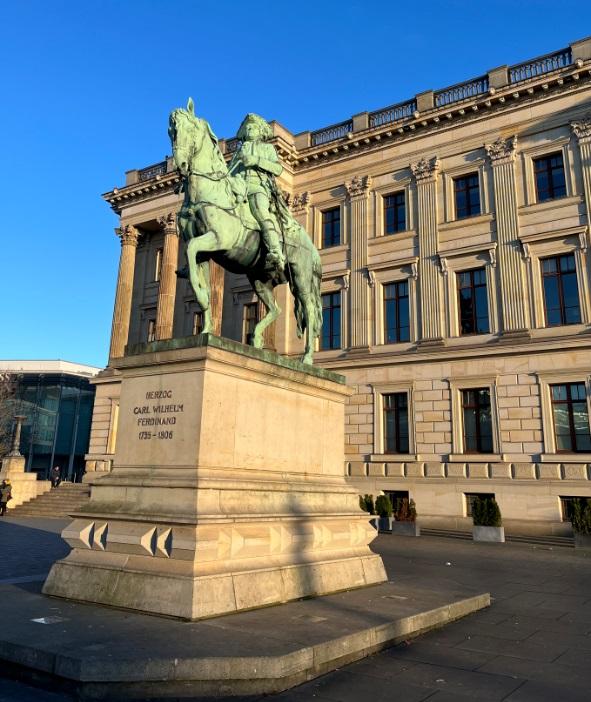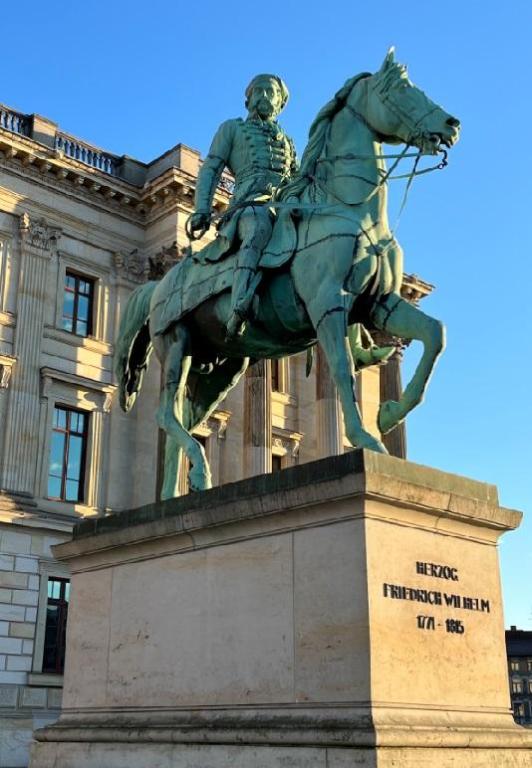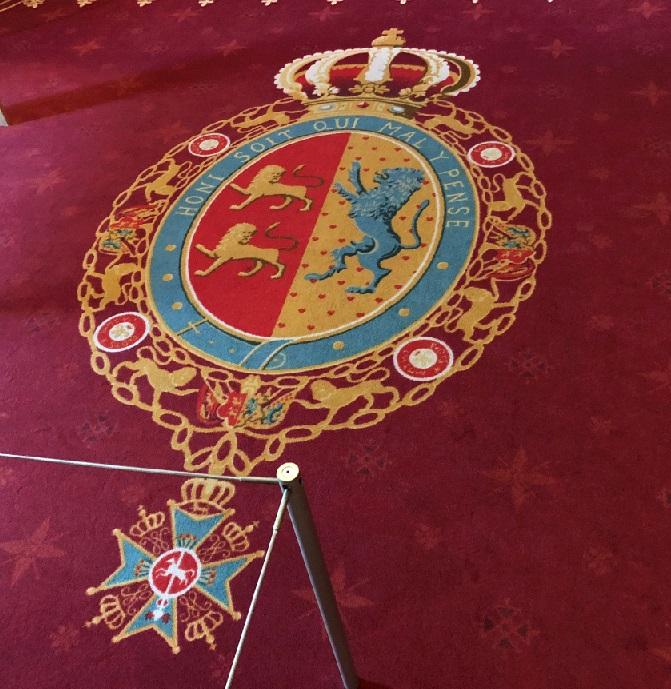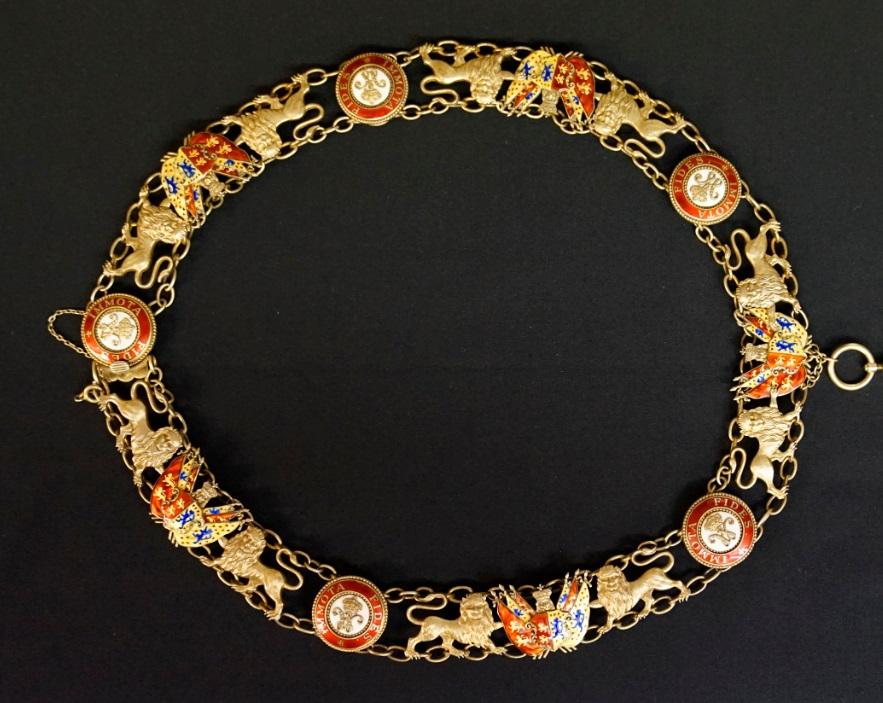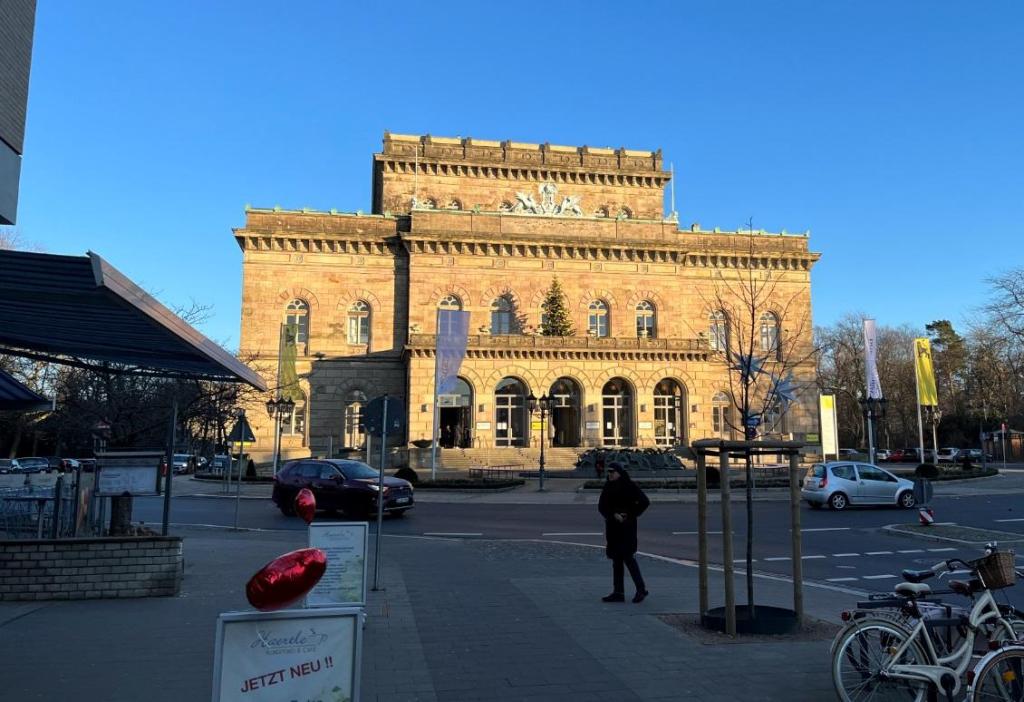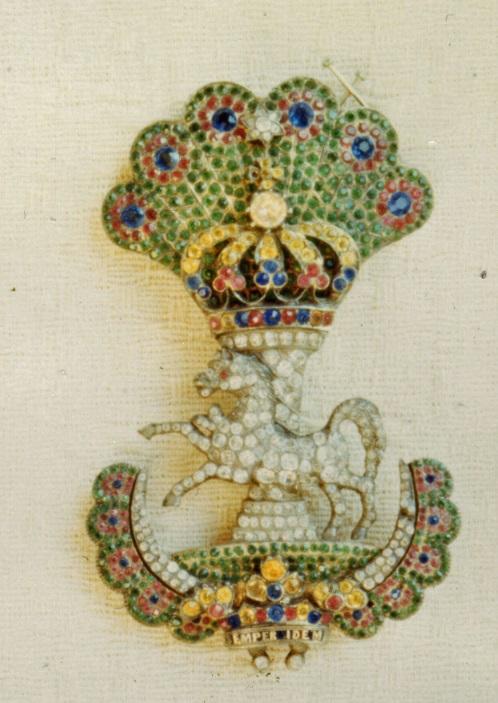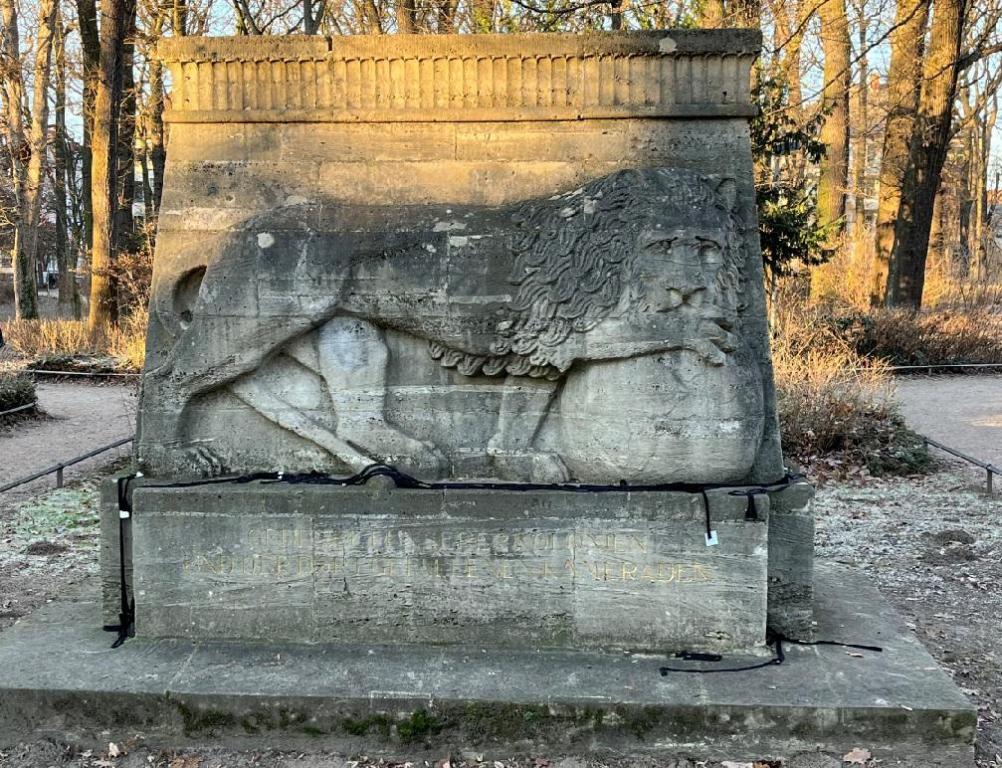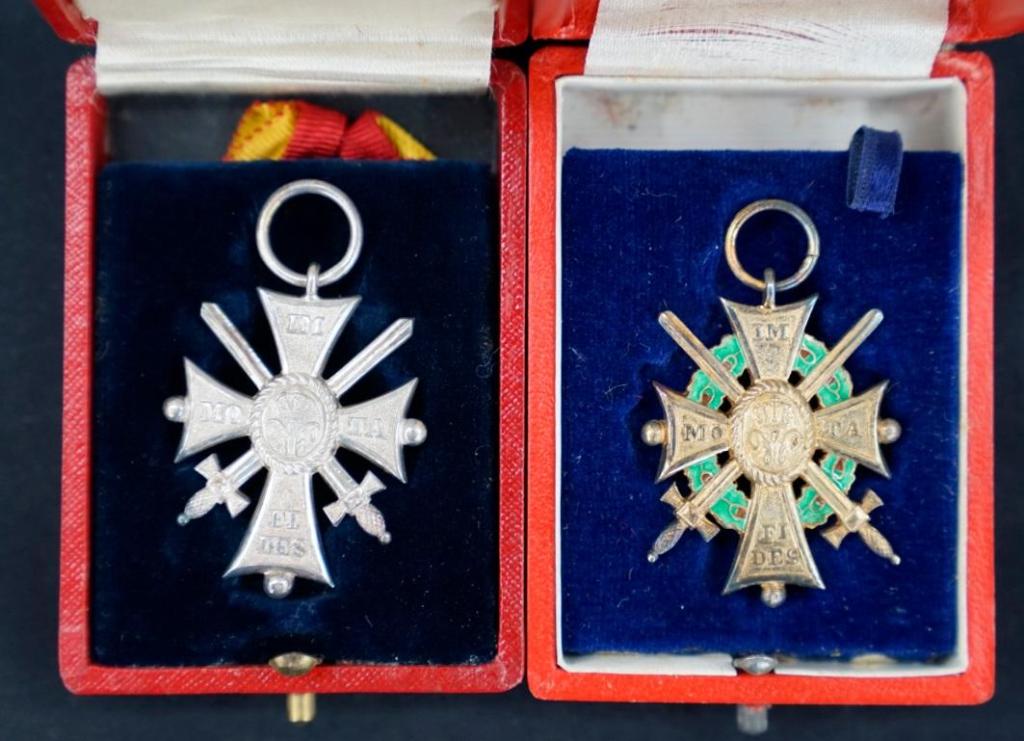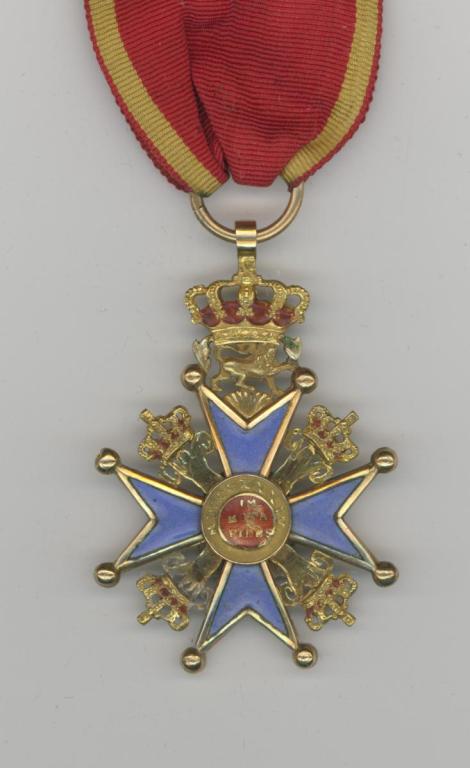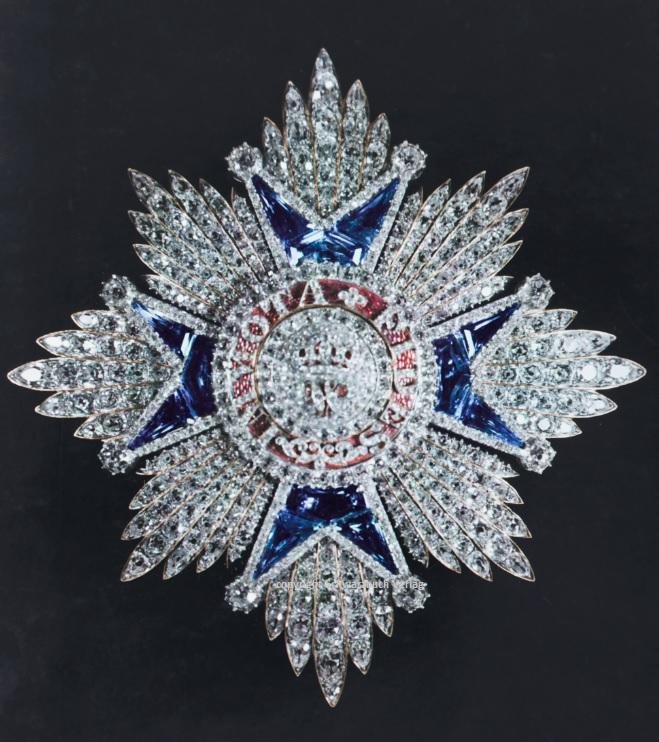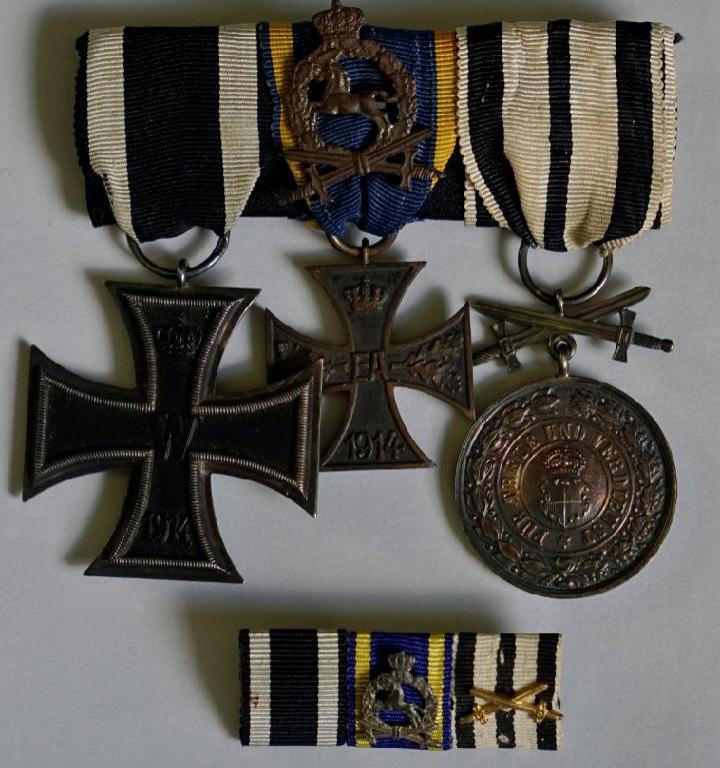-
Posts
511 -
Joined
-
Last visited
-
Days Won
10
Content Type
Profiles
Forums
Blogs
Gallery
Events
Store
Everything posted by BlackcowboyBS
-
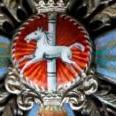
Queen Elizabeth II RIP
BlackcowboyBS replied to azyeoman's topic in Great Britain: Orders, Gallantry, Campaign Medals
Yes truly a sad day and turn of an era! May her Mayesty rest in piece, now laying besides her beloved husband. My thoughts are with the british people and the family of H.R.M. But just one remark to the theme starter, Louis XIV was even longer on his throne than ER II. -

Unknown award Please help
BlackcowboyBS replied to Kriegsmarine Admiral's topic in Wehrmacht Medals, Decorations & Awards
Though question! I am still not convinced, that this is a KvK1X. Well the other is also hard to decide. My first impression was: Reiterabzeichen. But to be honest from the look it could also be the Sportabzeichen der SA, but was he ever a member of the SA? I would doubt that untill somebody proofed me wrong, so I vote for Reiterabzeichen. -
Hi, I would like to show you an IC2 from the royal mint in Stuttgart, at least this is, what the mark in the ring indicates. I am not sure, if we have seen this mark here before.
-
Hello Guys, I just found an amazing movie showing a restored and colored version of Hitler and his circles / closer fellowship all wearing uniforms, medal bars and insignia. For me living in munich it was fascinating and disturbing on the same time to see all this and recognizing the place. So damned realistic. By the way does anyone know who this SS man is, you can see in the pre view below, he seems pretty high placed, wears a bavarian military merit order with swords and everybody is listining to him, the lady in pink is admiring him as well and he wears the bloodorder as well.
-
Hm, to be honest I am allways a little suspicious, when it comes to this. Pieces with the SS Runes on it, do have a special fascination to many people, so there are many modern fakes around to spoil people. The M-Rune, which stand for Man could of course mean manhood and all what this stands for: brave, loyal, true, fierce fighter, ... But it might be due to the bad photo I think I see a cast and if so, this is a modern product and has nothing to do with the NS-Regime and the years of the Third Reich.
-
If it really is a goose then it must had been a mascot to the regiment. Reminds me of that ancient story where gooses warned the romans before the celtic warriors tried to conquer Rom. The romans were only able to defend the last hill and when the celtics attaked by night the gooses warned them so they could withhold their last stand. It happened 387 b.c. Maybe gooses had similar stories for that regiment?
-
Walk 3: Main Cemetery Helmstedter Strasse - Schill Memorial / Concentration Camp Subcamp Schill Strasse: If one walks on the Braunschweig main cemetery in the Helmstedter street, there are some historically interesting graves, but I limit myself to the graves for the fallen Braunschweig soldiers of the First World War (right next to them lie some fallen soldiers from the Second World War). Of course, only a few of the thousands of fallen soldiers of the former Duchy of Brunswick lie here. This cemetery of honor was inaugurated after the end of the World War I, and some of the memorials came from Belgium, which were dismantled there (after the Second World War) to be rebuilt in Braunschweig. Unfortunately one does not care any longer properly for these graves, so that they partly decayed. One finds here all ranks from the simple rifleman up to the colonel and also all arms are represented. I simply let the photos speak for themselves. I call this series of pictures: The calm after the storm In the midst of all these fallen is also a memorial for the 1870 / 71 fallen soldiers from Braunschweig, it is now completely surrounded by a rhododendron, so life blossoms from the dying, for me a sign of hope in all this sadness. After reading through inscriptions of the graves, memorials, and names there, and perhaps imagining the horrors, hopes and dreams that the fallen have experienced and are buried here, one leaves the cemetery again through the main entrance and turns right and follow Helmstedter Straße in the direction of the city center. After crossing under the DB tracks, turn left into Schillstraße. At the end of the street you will find the Schill memorial on the left and also the memorial for the Schillstraße subcamp. Major Ferdinand von Schill was a famous Freikorps leader in the 19th century. Many of his comrades-in-arms became well-known personalities after the wars of liberation. Wounded in the battle of Auerstedt, von Schill escaped to Kolberg. Here he undertook some military patrols, which earned him the Pour le Mérite. The Prussian king allowed von Schill to set up a free corps with scattered and ransomed soldiers and wage war against Napoleon. After the peace treaty of Tilsit, von Schill had to retreat to the vicinity of Küstrin. After the French troops had left Berlin, von Schill rode off with his men and the remnants of the Prussian army into Berlin, where he received a triumphant welcome. In keeping with his nature as a Hussar officer, he could not wait until it was time to fight the the hated enemies from France again. When Austria rose in 1809 von Schill did not wait until he received an official order, but started his own campaign. He conquered Dessau. Here he had published the famous pamphlet: To the Germans. His hopes were similar to those of the famous Black Duke of Braunschweig, who at the same time was raising his black corps. After the Austrians were quickly defeated, von Schill moved to Stralsund and fought a fierce battle with the French and the Westphalian troops near Magdeburg (May 5). He arrived in Stralsund on May 25, 1809, six days later, the French attacked the city and the Freikorps with superior forces. Major von Schill suffered fatal wounds in the process. His body was put on display by the victors. They beheaded his corpse and the body was buried in an unknown grave. His head was preserved in alcohol and sent as a trophy to King Jeremone in Kassel and finally arrived in the Dutch town of Leiden. 14 of his men were brought to Brunswick, sentenced to death here and shot. The monument shows the place where they were executed. After the German lands were finally liberated from Napoleon, this monument was erected in 1837, and the head of Major von Schroeder, brought from Leiden was placed here, beside his comrades. On the same site there is also a memorial to the approximately 2000 concentration camp prisoners, who were forced to work in the Büssing works during the Second World War, and many of whom were also perished. I think that these walks have provided you with enough material to walk on phaleristic tracks around the city of Braunschweig in good mood. I really hope, that you enjoyed this little trips!
-
Walk 2: Stage 2 Inselwall - Rosenthal - Monument Ölper – Lessingplatz We walk a bit straight ahead until we come across the stumbling stones of the Aronheim family at Inselwall 4. The old and well established Jewish family was firmly integrated into the the Braunschweig society, Helene Aronheim had been awarded the Braunschweig Cross of War Merit for Women and Virgins for her service in World War I. After her deportation, she died in Theresienstadt in 1943. Her son Adolf Aronheim fought in the First World War and was awarded the EK2, the Wounded Badge in Black as well as the Brunswick War Merit Cross 2nd Class. When he too was to be deported in 1943, he committed suicide. About the remaining family members the respective Stolpersteine gave more information. Our gaze now falls on the Villa Löbbecke, which once belonged to the banker family Löbbecke and was used by the SS from 1933. After reconstruction it serves today as a guesthouse of the technical university. We turn around and cross the river Ocker on the narrow Rosenthal Bridge. Be aware that it is located in front of the Friedrich Wilhelm Wilhelm oak and is only suitable for pedestrians. In front of the house in the street Rosenthal 9 we see the stumbling stones of the family Löwendorf. Walther Löwendorf was a fighter in the World War I and was also awarded for his Bravery with the War Merit Cross 2 on the fighter ribbon. He immigrated to Palestine in 1938 and survived the Holocaust. The Stolpersteine (stumbling stones) provide information about the other fates. We follow the small street until we reach Cellerstraße, here we turn right. There is a longer distance ahead of us, who likes can take the bus of the line 416 or 480 at the bus stop "An der Maschstraße” and get off at the bus stop "Beim Gericht". This is a total of 2 stops further. Get off here and continue walking in the direction of travel. Pedestrians simply walk along Cellerstraße until they also also come to this bus stop. Now turn right into Cellerstr. and follow it until it leads into Celler Heerstraße. After the the freeway we find the iron monument at Ölper on the right. Here the meeting of the Black Schaar under the leadership of Duke Friedrich Wilhelm against the troops of the Kingdom of Westphalia under General Reubel took place. In the course of the fighting, the horse of the Black Duke was fatally shot, but he himself remained unharmed. Since General Reubel for reasons, that are still not understood today, decided to break off the battle and to wait for reinforcements, which rushed from Magdeburg to the battlefield, the Braunschweig prince was seen the victor. He then fled to the North Sea chased by his enemies. The monument was inaugurated on October 15, 1845, and is also decorated by four lions, which are depicted on the sides of the pedestal. On the sides of monument the names of the battle sites and the names of the officers of the Black Corps are mentioned. We remember once again the Cross of Honor from 1809 and turn to the way back. Those who are still well on foot can walk back via Celler Straße, the other could take a ride on the bus. If you take the bus, take the 416 or 480 to the Radeklint stop. Get off here and walk a short distance further into direction of travel, cross the traffic light and turn right into Güldenstraße. Immediately after that turn left into Bäkerklint, here take the first right the street is still called Bäkerklint - and pass the Eulenspiegelbrunnen (yes, he used to play his tricks here as well. I say only owls and guenons) towards the left fork and take the Breite Straße. We reach the old town market, admire the old town hall, the church and the square, which we cross. We walk past the the sacristy of the Martini church and are immediately on the goat market, here our gaze falls on the district court, which still looks as it did looks as it did in ducal times. We turn to the left into the Garküche and pass the Chamber of Commerce and Industry. We recognize the building we saw from the Medal of Merit of the Chamber of Chamber of Commerce. At the Brabandtstraße we turn to the right and walk to Bankplatz and straight on to Friedrich Wilhelm Platz. Here we turn right and see the old station building in front of us. Duke Ernst August with his wife Victoria Luise arrived here by train in 1913 and were celebrated by the honorary formations of his citizens, clubs and soldiers. Today, a bank resides here. We turn left and follow the Bruchtorwall until we reach Lessingplatz. It is inviting and one of the most beautiful squares in the old town of Brunswick. Walk a little bit straight ahead, until we are again in front of some stumbling stones. In front of the house at Lessingplatz 11 are the Stolpersteine of the family Gutkind. The persons are the children / grandchildren of the banker Max Gutkind. Walter Gutkind fought in the First World War, received the Iron Crosses 1st and 2nd class as well as at least the Braunschweig War Merit Cross 2. Class, possibly also that of the First Class. After the the war he became a judge and rose unceasingly and it was generally assumed that the elite jurist would rise to become president of the Higher Administrative Court. But the 1933 Law for the Restoration of the Professional Civil Service prevented this. His status as a front-line fighter still protects him somewhat, but on September 15, 1935, the so-called Reich Citizenship Act comes into force and Walter Gutkind was dismissed. He moved to Berlin, where he was apprehended and taken to the Sachsenhausen concentration camp. Here the old front-line fighter falls seriously ill and was released on December 14, 1838. Walter fled with his family to England, after the beginning of the war he was arrested and remains interned until October 1940, after which he finds work in a knitting factory. After the end of the war, he was offered the position of president of the administrative court in Braunschweig, but Gutkind refused and stood in England with his family until the end of his life. At this point we remember the Knight's Cross 2nd class with swords under the Cross, the Knight's Cross 1st Class with Swords on the Ring, and the Landwehr Service Award 1st class all awarded to Max Gutkind. We turn around and turn on Lessingplatz in the direction of the Ägidienkirche. On the street Hinter Ägidien we turn left into the Ägidienstraße, follow it until the street Hinter Liebfrauen, turn left and cross the Waisenhausdamm, turn half right into the Münzstraße and after 300 meters we arrive again at the cathedral Sankt Blasius. Here our second walk ends, for refreshment I recommend a snack and a few cold drinks at Mutter Habenicht and there I will tell you about the ... well you know!
-
Walk 2: Stage 1 Cathedral - Braunschweig State Museum - Friedrich Wilhelm Oak We begin our second walk on the east side of the Brunswick Cathedral. If we look at the outer wall of the sacristy, we can see a cannonball stuck in the masonry. Below it is the date written in Roman, August 20, 1615. Allegedly, this cannonball comes from a cannon that was fired during the siege of the city by the ducal troops on that very day from the Nussberg (we remember the first walk) at the renitent city and got stuck here. Brunswick was an independent city for a long time and the dukes of Brunswick often tried in vain to annex this city again. It was not until 1671 that the dukes succeeded in bringing the city back under their control. Whether the cannonball really was fired from the Nussberg or was placed here later as a reminder of the siege and shelling is still disputed. At the sight of the cannonball we think of the the famous Brunswick noble family of the von Münchhausen, which still today manage their estate not far from here. Let's enter the St. Blasius Cathedral, donated by Duke Henry the Lion in 1173. The German nobility met here in 1914 for the last time in peace to celebrate the baptism of Hereditary Prince Ernst August, grandson of the German Emperor Wilhelm II. The English envoy brought gifts from the royals from London and in return received the Grand Cross of the Order of Brunswick. The Nazis made the cathedral into a National Socialist consecration site. Under the sacristy we reach the crypt, where many dukes of Brunswick found their last resting place. Among them is Henry the Lion. At the time of the National Socialism the sarcophagi were opened and what was thought to be the body of Henry the Lion proved to be unsuitable for propaganda purposes. The corpse was only 162 cm tall and showed a severe leg injury or shortening. The hair was not blond as hoped, but dark and slightly curled. No wonder the Guelphi came from Northern Italy as her name Guelphi proves. Therefore the connoisseur should always pronounce the Hanoverian Guelph Order "Guelph Order". The remains of a taller person were found and the two corpses were moved, since one assumed an exchange. Then they closed the stone sarcophagi and prepared the mantle of silence over this episode. Other dukes of Brunswick lie in another crypt, among them Friedrich Wilhelm and his second son Duke Wilhelm, who founded the Order of Brunswick. We bow our heads and after further inspection of the cathedral we step onto the Castle Square. In front of us the monument of Henry the Lion, the castle Dankwarderode and the Brunswick State Museum. If it were not currently closed, one could see here some beautiful and rare exhibits of Brunswick orders. We walk past the museum and turn right into Papenstieg and walk past Braunschweig's cult pub Mutter Habenicht. I can tell you about the amorous stories that took place here personally over a beer. At the end of the street we keep diagonally right straight ahead and follow the street: Höhe, until we come to the Küchenstraße, here we turn left. We follow the street until shortly before the Ocker we turn right into the Petritorwall. After only a few meters we notice on the right side the Friedrich Wilhelms oak tree. At this place the Black Duke camped in the midst of his soldiers in the night from August 1, 1809, after his march to the North Sea had led him through his residential town. He refused the offer to spend the night in his castle, as it was occupied and not his own at the moment. Frederick William had succeeded his late father in 1806, but the Duchy of Brunswick had ceased to exist. The Welfenspross sat on his fief Oels in Prussia and dreamed of regaining his throne. That is why he joined the Austrians, but after the Austrians lost again to Napoleon, the duke formed his own troop and headed north. It came to a battle near Halberstadt, the triumphant invasion of Wolfenbüttel and Brunswick, and the battle at Ölper. After that, the duke moved on to the North Sea, where he succeeded in embarking with most of his troops to England. His soldiers fought on the Spanish peninsula and Sicily before Napoleon surrendered and went to Elba. Frederick William took back his Duchy back into possession. The oak tree under which he camped in 1809 and received the delegations of the citizens was still cut down in 1809, only in 1850 the Braunschweiger warriors' association planted a new tree on the spot, which was fenced in 1859 for the 50th anniversary. This oak fell victim to the bombs in WW2 and was replanted after the end of the war. At this point we remember the Cross of Honor for 1809, which exists in two variants: one donated by Duke Carl II and one by Duke Wilhelm. Officers received a golden cross, non-commissioned officers and enlisted men one of bronze.
-
Hi 1812 Overture, The wedding medal of Brunswick as such is an interessting subject in itself, it was minted in 3 variants by order of Ernst August Duke of Cumberland (the father of the groom): In gold with a diameter of 56 mm and a weight of 146 grams. This version was reserved for the princes and royal highnesses who took part in the wedding festivities. This medal has no ribbon ring. In silver with the same diameter of 56 mm but much lighter, the weight is between 75 and 80 grams. This medal is likely to have been given to the rest of the guests and dignitaries. This medal has no band ring. In silver with a diameter of 23 mm and a weight of about 12 grams. This medal has a ribbon ring. I can't say anything about the ribbon shown in the link above, blue and yellow are more the colors of the city of Brunswick, those of the Guelphs are red and yellow! I have seen this medal on a red yellow ribbon that looks very similar to that of the HdL and also on yellow and blue like the non fighting war merit cross of Brunswick. Whether this small medal couldn't be bought also as souvenir or was distributed to participants who where not directly at the wedding is not known to me. I have not found a list about this untill now. But I am sure, that it wasn't allowed to wear these medals on the grand medal bar before end of 1918, so I doubt that the medal bar from e-medals is origin regarding this wedding medal. The other wedding medal is for the 25th anniversery of EA II the father. It was not official as well, I never have seen it on a medal bar of the Guelphs and they do wear some other anniversary medals on their bars. I guess this one was also handed out as a gift to the servants in Gmund, where the family lived in austrian exile after 1866.
-
Walk 1: Stage 2 Nussberg - Olfermann Monument - Hussar Barracks - Löwenwall – Magniviertel We follow Jasperallee to its end and turn right into Herzogin-Elisabeth-Strasse. Behind the Jugendkirche (Church) we turn left and enter the Prinzenpark, which was donated by Prince Regent Albrecht. At his monument we commemorate him and the extension of the Brunswick Order with the badge of honor, that Prince Regent Albrecht donated. We continue walking eastwards and reach the Nussberg. In front of us the Frank's Field opens. On this square, on October 17 and 18, 1931, the march of 100,000 SA men and the National Socialist flag consecration took place. We remember the 1936 SA badge donated for the occasion. If you let your gaze wander over the field, one wonders whether there really was room for 100,000 men. We continue hiking uphill and walk towards the Olfermann obelisk. This honorary column in memory of Major General Elias Olfermann was erected in 1832 by the Braunschweig officer corps on the occasion of the 10th anniversary of the death of the honored general. Olfermann had, after the death of the Black Duke at Quatre Bras, assumed the command of the Brunswick troops and led them in the battle of Waterloo. As a corresponding badge of honor, only the Brunswick Waterloo Medal can be shown here, this one bears the border inscription of Major of the Hussars August of Henninges. Before we walk further, we look once in the direction of the city center and see the silhouette of the old ducal city, and we notice that almost all of the churches have two different steeples. We follow the path in southern direction and reach Ebertallee, which commemorates the first president of the German Reich. We turn right and walk along Kastanienalle, taking a short look at the Korfesstraße, which is named after Major Korfes from Braunschweig. This led on the the legendary march of the Black Crowd and and the story of Korfes who led the French pursuers astray. With the alleged march of the main contingent to Bremen, he gave his duke sufficient enough time to reach the saving North Sea coast. Major Korfes and the majority of his men also managed to escape, and in the war on the Spanish peninsula Korfes was promoted, but soon died of yellow fever. As soon as the Kastanienallee crosses the Altwiekring, we turn to the right and spot a large red brick building on our left. Here the Braunschweig Hussars were housed until 1918. Above the entrance there is still the banner with famous battles fought by HR 17 and the ducal name on a crowned escutcheon. After passing the former barracks, we turn left into Hussar Street. We follow it to Max-Beckmann-Platz, turn left and follow the Parkstraße until we reach the Helmstedter Straße. Here we turn to the right and after the two former gate houses we cross the Okergraben. On the right side we see the Herzog Anton Ulrich Museum, the most famous art museum of the city and one of the best of Lower Saxony. Founded in 1754 by Duke Carl I. Anyone interested in art should take the time for a visit. We walk a short distance direction of the city center and turn left at the first intersection into Magnitorwall. We walk towards the museum, which has a small collection of orders and medals. Here the exhibition of Reckewell and Fischer took place in 1984. The famous red booklet about the Braunschweig orders and decorations was published by this museum. Before we now turn right into the Magniviertel with its many quaint pubs, we pass the museum and enter into the Löwenwall and look at the obelisk, which was erected in 1822 and was financed by donations from the Braunschweig citizens. It served the memory of the two fallen dukes Carl Wilhelm Ferdinand and Friedrich Wilhelm. The obelisk is 22 meters high and was made of ore, which was casted in the smeltery of Zorge. The obelisk is guarded by 4 cast-iron lions and on each side there is a motto. In summer this is a lukewarm place, which is noticed by surprisingly few Braunschweigers. If one were to walk the square to the end , one could follow a few steps to a small forecourt. the Westermann forecourt. Here stood the two equestrian statues after the demolition of the castle, until they moved back to their old location after a little over 40 years. But now back to the Magniviertel. Here we go to the Friedrich II. pub, but actually it doesn't matter in which pub we sit down and get our strength back with a cool Wolters beer. Look while drinking on the coat of arms of the brewery Wolters, then you recognize the collane of the Order of Brunswick, the small coat of arms and the motto of the Order of the Garter. After we have fortified ourselves extensively, we walk further through the Magniviertel towards the Bohlweg. On the right we see the castle where we started. The Bohlweg itself is architectonically rather worth hiding, we might be interested in the fact that the two purveyors to the court, Jürgens and Siebrecht, had their stores here. Because the old buildings were destroyed in the hail of bombs of the Second World War, there is nothing to be seen here. So I can only show you a painting, which shows Friedrich Siebrecht as a content businessman. And that ends the first phaleristic walk.
-
Walk 1: Stage 1 Castle - State Theater - Colonial Monument We start the first walk in front of the palace, our eye catches the Quadriga and the two equestrian monuments of the two former dukes of Brunswick. On the left is the monument to Duke Carl Wilhelm Ferdinand, he was so badly wounded at the Battle of Auerstedt that he died 4 weeks later. He was a famous Prussian field marshal in his time and was editor of the infamous Manifesto of 1792, with which he wanted to stop the French from harming their king. Before his own death, he heard that Napoleon had declared that the Duchy of Brunswick would be dissolved. On the right we see his fourth born son Frederick William, who later went down in history as the Black Duke. His move to northern Germany and his death on the eve of Waterloo will be discussed later. The castle itself has an eventful history, the new building, which was reopened in 2007, stands on the exact spot where the last Guelph palace in Braunschweig stood until 1960. The predecessor, the so-called Graue Hof, was built on the same site from 1717. This was destroyed in 1830 by a storm and set on fire by angry crowds. So that a new castle needed to be built in its place. This was completed in 1841 and looks like today's new building from the front. Similarly as in Berlin, one uses also old stones, which one could still found. It was in this castle that Duke Ernst August abdicated and thus ended the history of the Duchy of Brunswick. Since the later GröFaZ in German became citizenship in Braunschweig and through that a German by nation, he thanked the city as Chancellor of the Empire and had a Junkerschule of the SS established here. Badly damaged by bombing, the city decided in 1960 to demolish the remains and to create a green area here on this place. Despite its popularity with students for their annual school-out-party, however, this area was falling into disrepair. The driving force behind the reconstruction of the castle on its original site is the Braunschweig entrepreneur Richard Borek, who owns the MDM, among other things. So anyone who collects new coins will be familiar with this name. We now enter the castle through its left side entrance and find ourselves in the museum, which is already interesting for us phaleristicians because of the many paintings and the medals on them. In the throne room we are standing on a copy of the carpet that once laid in front of the ducal throne. The collane of the Duke of Brunswick's Order of Merit of Henry the Lion is woven into it and since Duke Wilhelm was so proud of his Order of the Garter, he has chosen the motto of the English order here instead of the Order of Brunswick. After we have looked around enough in the Castle Museum, we leave it and turn to the right. After a few steps we reach Steinweg, here we turn to the right and walk towards the State Theater. Before we reach it we see on the left side the Cafe Haertle on the left side. If you want to enjoy coffee and cake, you are in the very best company of old-established Braunschweiger. The cafe may not be hip, but from its cake offer still the best that can be found in Braunschweig. The State Theater interests us insofar as here the revolution - my friend Roger Reckewell prefers to speak of a coup d'état - against Duke Carl II began with an attack on the ducal carriage. Carl II had once again attended a show by his mistress and then famous singer Elisabeth Dermer. Incensed by this incident he ordered the cannons in front of his castle to be loaded with gunpowder and in case of further riots to fire cartridges into the crowd. This news spread like wildfire and led to further unrest and the storming of the castle on September 7, 1830. If we think of Duke Carl II, we naturally think of his greed for diamonds and his splendid decorations of the order come to mind. Here, for example, is his counterpart to the Order of Merit Henry the Lion, which he brought out in anger over the endowment of his younger brother. Duke Carl II is still present in Brunswick, so it is fitting that the musical "The Diamond Duke and the burning castle" will be performed in the State Theater. We pass the theater on the right and follow Jasperallee straight ahead. At the time of the Empire, this street was called Kaiser-Wilhelm-Straße. We cross the Hagenring, pass the beautiful St. Pauli Church and enjoy the many beautiful houses of the Wilhelminian area, the so called Gründerzeit, which make the eastern ring area a popular residential area of Braunschweig. We reach the city park and on the left side, somewhat hidden, lies the colonial monument built in 1925, that is dedicated to the struggle and death of Braunschweig's soldiers in the colonies. Today again and again violently disputed and from time to time exposed to paint bag attacks, this memorial reminds us above all of the Cross of Merit with Swords, which was awarded for the first time for fighting in the colonies. Some Brunswickers served in the Schutztruppe and fought against the Hereros. Some of them stayed in today's Namibia after the fighting and became farmers there. In the 80s there was still an active German-African association, which had many contacts to descendants of these settlers. I myself was still present at one or the other meetings. The swords for the Braunschweig Crosses of Merit were instituted December 11, 1879. Awarded for the first time in 1900 on the occasion of the Boxer uprising in China. Meritorious non-commissioned officers and enlisted men who received for 1870 a Cross of Merit for Bravery on the battlefields, were awarded the swords only on the occasion of the 100th Anniversary of IR 92 in 1909.
-
Today I would start a new thread here, which deals with phaleristic walks around special places. I have worked out three different walks through the capital of the duchy of Brunswick and tested every step of them. So when ever one of you ever come to this town, you may find these suggestions and stories behind these places, some of them not so common and more hidden places, interesting and useful. I have written a pamphlet to support the DGOS for their spring meeting in Brunswick this year and I have heard that even if being written in German, it has found its way to Danmark, the Netherlands and other countries. So I will post these three walks with all the photos here in an english version. When this thread is ended by the last walk I will offer to send out the odf with the german and English text to everybody, who send me a note with his email address. So you can send it now, but I will wait before sending until I have posted all three walks. We start with a short introduction and then will jump right into walk 1. Each walk is divided into two or three stages. I do hope that you enjoy it and maybe some of you will write their own walks for friends of medals and orders for their home towns or places they know well. Walks through Brunswick from a phaleristic point of view! A guide for friends of orders and medals by Stephan Schwarz Introduction: The Guelph dynasty and the duchy of Brunswick-Lüneburg formed by them is one of the oldest duchies and although one of the most famous Guelphs Henry the Lion was among the most powerful princes during his lifetime, the later duchy of the Wolfenbüttel line is one of the smaller and less important of the German states. Beginning with the division of the inheritance in 1267 and finally with the Calenberg line (the later House of Hanover) in 1692 to become electors of the German Emperor, the Guelphs of Brunswick had become the political losers on the stage of history. But Brunswick was tradition-conscious and always aware that they represented the older line of the Guelphs, so the loss of prestige hurt all the more. But when one is smaller than most of your playmates, you have to be more colorful to stand out. Thus the first real Brunswick Order of Merit, founded on April 25, 1834, although 19 years later than its dependency from Hanover, but it is clearly more splendid, indeed downright baroque in design. The Order of Loyal Friendship, founded by Duke Rudolph as early as 1731, existed for only a few years and will therefore not interest us here. But the history of the order of the Duchy of Brunswick, which started in 1696 and ended in 1918 can still be discovered today in Braunschweig, if one knows about the history and and walks through the beautiful city of Braunschweig with an alert eye. On the occasion of the planned event of the DGO from June 24 to 26, 2022, this pamphlet is to offer interested people three walks through Braunschweig, which will lead through the history of the orders and decorations of the small duchy inspired. The author wishes you a lot of fun while diving into the history of Braunschweig and following the three proposed walks.
-

a beautifull IC2 from Johann Wagner & Son
BlackcowboyBS replied to BlackcowboyBS's topic in Germany: All Eras: The Iron Cross
-
Sorry, but photos in a book fromNimmergut is not a good evidence to prove if an order is an original or a fake. Nimmergut has done much for phaleristics but even he had some huge mistakes written in his books. So let me tell you, that your cross on the right is a production after ww2. My guess goes in the direction of an italian maker. During ww1 only Juergens supplied the duchy with these crosses and he bought them from the following three suppliers: Gustav Brehmer in Marktneukirchen L. Christian Lauer in Nürnberg Koch & Bergfeld in Bremen PS: why do you think, that the cross on the left is a late one of ww1? I would dare to say, that this is a rare piece from 1914 / latest 1915 not older.
-

Which Medal?
BlackcowboyBS replied to FALvonKyffhausen's topic in Wehrmacht Medals, Decorations & Awards
The so called Gefrierfleischorden or the offical name is: Medaille Winterschlacht im Osten 1941 / 1942. See more here: https://www.ehrenzeichen-orden.de/zweiter-weltkrieg/medaille-winterschlacht-im-osten-ostmedaille.html- 4 replies
-
- unknown decoration
- wehrmacht
-
(and 2 more)
Tagged with:
-

Which Iron Cross and Uniform?
BlackcowboyBS replied to FALvonKyffhausen's topic in Germany: All Eras: The Iron Cross
Okay, so I was wrong! I thought that the iron cross is such an iconic medal that everybody would recognise it immediatly. So wellcome hier, you are at the right place to learn such things! -

Which Iron Cross and Uniform?
BlackcowboyBS replied to FALvonKyffhausen's topic in Germany: All Eras: The Iron Cross
you made my day Andreas, I think that FalvonKyffhausen might wanted to know the maker of that IC2, but from a photo like this it is impossible to say, well at least for me! Or I understood him wrong, could also be! So FalvonKyffhausen what was your intention? Knowing the medal or the maker? -

Which Uniforms/Divisions/Medals?
BlackcowboyBS replied to FALvonKyffhausen's topic in Wehrmacht Medals, Decorations & Awards
+ 1! -
just an actual warning to the community out there: There is at least one copied document of this certificate out on the marked. It was scanned from the magazin from 1919 and printed on a high professional color printer. So check it out, if some one wants to sell this one to you. I am sorry, but I can't tell where the original of this certificate is, because I truly don't know it.
-

EK1 1870 need some help
BlackcowboyBS replied to wangyaokang2003's topic in Germany: All Eras: The Iron Cross
well the mark says Friedländer and not Godet, this is point 1, Friedländer was not an offical manufacteurer of the IC1 in 1870 that is point 2 and I personally don't like the needle. I know that there are IC1 out there with a needle pretty similar coming from Wagner & son. So to summarize it, I won't buy it.


